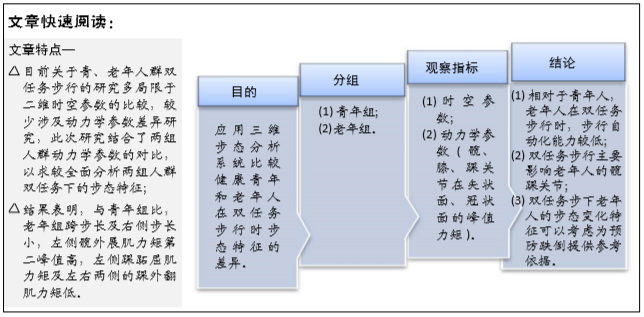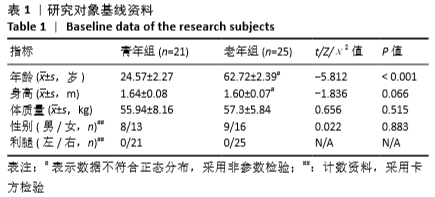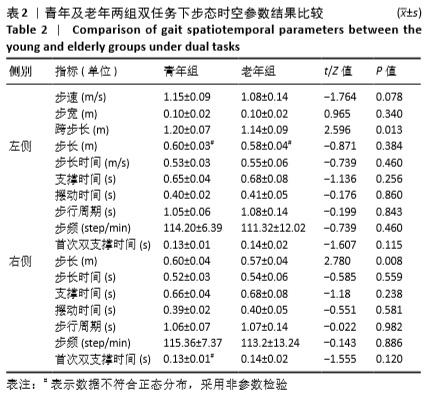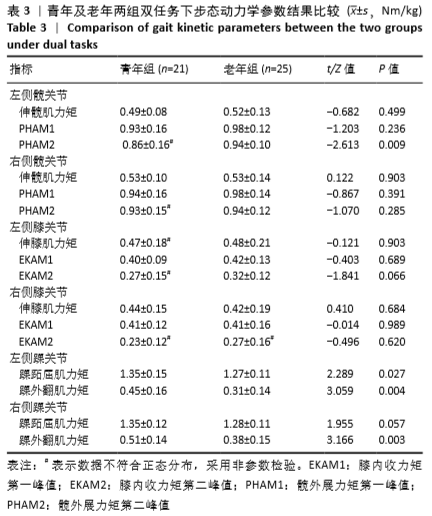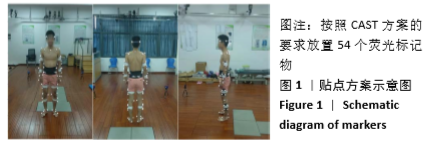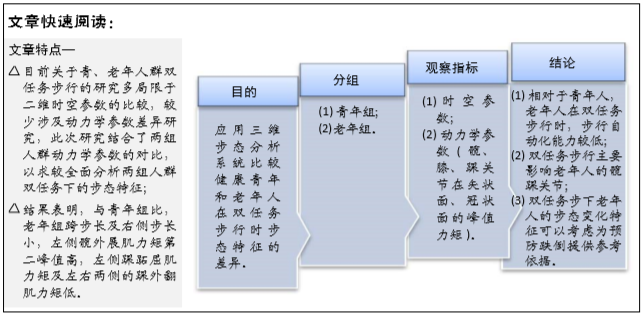[1] MUIR-HUNTER SW, WITTWER JE. Dual-task testing to predict falls in community-dwelling older adults: a systematic review. Physiotherapy. 2016; 102(1):29-40.
[2] LUNDIN-OLSSON L, NYBERG L, GUSTAFSON Y. “Stops walking when talking” as a predictor of falls in elderly people. Lancet.1997;349(9052):617.
[3] COMMANDEUR D, KLIMSTRA MD, MACDONALD S, et al. Difference scores between single-task and dual-task gait measures are better than clinical measures for detection of fall-risk in community-dwelling older adults. Gait Posture.2018;66:155-159.
[4] HERSSENS N, VERBECQUE E, HALLEMANS A, et al. Do spatiotemporal parameters and gait variability differ across the lifespan of healthy adults? A systematic review. Gait Posture.2018;64: 181-190.
[5] LAUFER Y. Effect of age on characteristics of forward and backward gait at preferred and accelerated walking speed. J Gerontol A Biol Sci Med Sci. 2005;60(5):627-632.
[6] ABOUTORABI A, ARAZPOUR M, BAHRAMIZADEH M, et al. The effect of aging on gait parameters in able-bodied older subjects: a literature review. Aging Clin Exp Res.2016;28(3): 393-405.
[7] SMITH E, CUSACK T, CUNNINGHAM C, et al. The Influence of a Cognitive Dual Task on the Gait Parameters of Healthy Older Adults: A Systematic Review and Meta-Analysis. Journal of Aging and Physical Activity. 2017; 25(4):671-686.
[8] QU X. Age-related cognitive task effects on gait characteristics: do different working memory components make a difference?. J Neuroeng Rehabil.2014;11:149.
[9] HOLLMAN J H, KOVASH FM, KUBIK JJ, et al. Age-related differences in spatiotemporal markers of gait stability during dual task walking. Gait Posture.2007;26(1):113-119.
[10] STUART S, ALCOCK L, ROCHESTER L, et al. Monitoring multiple cortical regions during walking in young and older adults: Dual-task response and comparison challenges. Int J Psychophysiol. 2019;135:63-72.
[11] KIKKERT L, VUILLERME N, VAN CAMPEN J P, et al. The relationship between gait dynamics and future cognitive decline: a prospective pilot study in geriatric patients. Int Psychogeriatr.2018;30(9):1301-1309.
[12] TOMBU M, JOLICOEUR P. A central capacity sharing model of dual-task performance. J Exp Psychol Hum Percept Perform.2003;29(1):3-18.
[13] MCGRATH R L, ZIEGLER ML, PIRES-FERNANDES M, et al. The effect of stride length on lower extremity joint kinetics at various gait speeds. PLoS One.2019;14(2):e200862.
[14] KO SU, JEROME GJ, SIMONSICK EM, et al. Differential associations between dual-task walking abilities and usual gait patterns in healthy older adults-Results from the Baltimore Longitudinal Study of Aging. Gait Posture.2018;63:63-67.
[15] MOYER RF, RATNESWARAN A, BEIER F, et al. Osteoarthritis year in review 2014: mechanics--basic and clinical studies in osteoarthritis. Osteoarthritis Cartilage.2014;22(12):1989-2002.
[16] PAQUETTE MR, ZHANG S, MILNER CE, et al. Effects of increased step width on frontal plane knee biomechanics in healthy older adults during stair descent. Knee.2014;21(4):821-826.
[17] SONG Q, TIAN X, WONG D, et al. Effects of Tai Chi Exercise on body stability among the elderly during stair descent under different levels of illumination. Res Sports Med.2017;25(2):197-208.
[18] DEMURA T, DEMURA S, UCHIYAMA M, et al. Examination of factors affecting gait properties in healthy older adults: focusing on knee extension strength, visual acuity, and knee joint pain. J Geriatr Phys Ther.2014;37(2):52-57.
[19] GUADAGNIN E C, DA RE, MOTA CB, et al. Effects of regular exercise and dual tasking on spatial and temporal parameters of obstacle negotiation in elderly women. Gait Posture.2015;42(3):251-256.
[20] ALARCON R, NALPAS B, PELLETIER S, et al. MoCA as a Screening Tool of Neuropsychological Deficits in Alcohol-Dependent Patients. Alcohol Clin Exp Res.2015;39(6):1042-1048.
[21] AIONA M, DO KP, EMARA K, et al. Gait patterns in children with limb length discrepancy. J Pediatr Orthop.2015;35(3):280-284.
[22] CAPPOZZO A, CATANI F, CROCE U D, et al. Position and orientation in space of bones during movement: anatomical frame definition and determination[J]. Clin Biomech (Bristol, Avon), 1995;10(4):171-178.
[23] AL-YAHYA E, DAWES H, SMITH L, et al. Cognitive motor interference while walking: a systematic review and meta-analysis. Neurosci Biobehav Rev. 2011;35(3):715-728.
[24] BONETTI LV, HASSAN SA, KASAWARA KT, et al. The effect of mental tracking task on spatiotemporal gait parameters in healthy younger and middle- and older aged participants during dual tasking. Exp Brain Res. 2019;237(12): 3123-3132.
[25] 黄萍,钟慧敏,陈博,等.正常青年人三维步态:时空及运动学和运动力学参数分析[J].中国组织工程研究, 2015,19(24):3882-3888.
[26] A G, US N. The effect of age on variability in gait. J Gerontol.1984;39(6): 662-666.
[27] 刘立,张庭然,罗炯,等.老年人与年轻人双重任务下阶梯行走步态特征比较[J].中国康复理论与实践, 2020,26(3):285-290.
[28] PRIEST AW, SALAMON KB, HOLLMAN JH. Age-related differences in dual task walking: a cross sectional study. J Neuroeng Rehabil.2008;5:29.
[29] AGNER S, BERNET J, BRULHART Y, et al. Spatiotemporal gait parameters during dual task walking in need of care elderly and young adults. A cross-sectional study. Z Gerontol Geriatr. 2015;48(8):740-746.
[30] KIM SJ, CHO SR, YOO GE. The Applicability of Rhythm-Motor Tasks to a New Dual Task Paradigm for Older Adults. Front Neurol.2017;8:671.
[31] DUCHARME SW, SANDS CJ, MOORE CC, et al. Changes to gait speed and the walk ratio with rhythmic auditory cuing. Gait Posture.2018;66:255-259.
[32] EIKEMA DJ, FORRESTER LW, WHITALL J. Manipulating the stride length/stride velocity relationship of walking using a treadmill and rhythmic auditory cueing in non-disabled older individuals. A short-term feasibility study. Gait Posture.2014;40(4):712-714.
[33] HEITMANN DK, GOSSMAN MR, SHADDEAU SA, et al. Balance performance and step width in noninstitutionalized, elderly, female fallers and nonfallers. Phys Ther.1989;69(11):923-931.
[34] VERGHESE J, WANG C, LIPTON RB, et al. Quantitative gait dysfunction and risk of cognitive decline and dementia. J Neurol Neurosurg Psychiatry. 2007; 78(9):929-935.
[35] ARVIN M, van DIEEN J H, FABER GS, et al. Hip abductor neuromuscular capacity: A limiting factor in mediolateral balance control in older adults?. Clin Biomech (Bristol, Avon). 2016;37:27-33.
[36] PORTO JM, FREIRE JR, BOCARDE L, et al. Contribution of hip abductor-adductor muscles on static and dynamic balance of community-dwelling older adults. Aging Clin Exp Res. 2019;31(5): 621-627.
[37] DAVIS LA, ALLEN SP, HAMILTON LD, et al. Differences in postural sway among healthy adults are associated with the ability to perform steady contractions with leg muscles. Exp Brain Res. 2020;238(2):487-497.
[38] ROGAN S, TAEYMANS J, BANGERTER C, et al. Influence of single and dual tasks on gait stability and gait speed in the elderly : An explorative study. Z Gerontol Geriatr.2019;52(1):23-27.
[39] NIEBOROWSKA V, LAU ST, CAMPOS J, et al. Effects of Age on Dual-Task Walking While Listening. J Mot Behav.2019;51(4):416-427.
[40] SIMIC M, HINMAN RS, WRIGLEY TV, et al. Gait modification strategies for altering medial knee joint load: a systematic review. Arthritis Care Res (Hoboken).2011;63(3):405-426.
[41] FUKAYA T, MUTSUZAKI H, MORI K. Relations between external moment and movement of the knee joint during the stance phase in patients with severe knee osteoarthritis. J Orthop. 2019;16(1): 101-104.
[42] KITO N, SHINKODA K, YAMASAKI T, et al. Contribution of knee adduction moment impulse to pain and disability in Japanese women with medial knee osteoarthritis. Clin Biomech (Bristol, Avon). 2010;25(9):914-919.
[43] DEVITA P, HORTOBAGYI T. Age causes a redistribution of joint torques and powers during gait. J Appl Physiol (1985). 2000;88(5):1804-1811.
[44] JUDGE J O, UNDERWOOD M, GENNOSA T. Exercise to improve gait velocity in older persons. Arch Phys Med Rehabil.1993;74(4):400-406.
[45] KERRIGAN D C, TODD M K, DELLA C U, et al. Biomechanical gait alterations independent of speed in the healthy elderly: evidence for specific limiting impairments. Arch Phys Med Rehabil. 1998;79(3):317-322.
[46] PETERS M. Footedness: asymmetries in foot preference and skill and neuropsychological assessment of foot movement. Psychol Bull.1988; 103(2):179-192.
[47] HIRASHIMA K, HIGUCHI Y, IMAOKA M, et al. Dual-tasking over an extended walking distance is associated with falls among community-dwelling older adults. Clin Interv Aging.2015;10:643-648.
[48] KRIBUS-SHMIEL L, ZEILIG G, SOKOLOVSKI B, et al. How many strides are required for a reliable estimation of temporal gait parameters? Implementation of a new algorithm on the phase coordination index. PLoS One.2018;13(2):e192049. |
